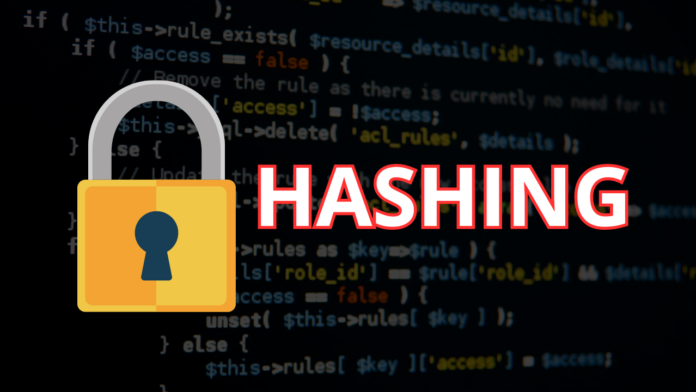SECRY – Hashing in Cyber Security – Hashing is a fundamental cryptographic technique used in cybersecurity to ensure data integrity, secure transmission, and verify the authenticity of digital information. It involves transforming any data, regardless of its size, into a unique fixed-length string of characters called a hash value or message digest. This hash value serves as a fingerprint of the original data, allowing for efficient and secure verification of its original state.
How Does Hashing Work?
Hashing algorithms, such as MD5 (Message Digest 5) or SHA (Secure Hash Algorithm), employ a series of mathematical operations to convert input data into a fixed-size output. The generated hash value uniquely corresponds to the input data and cannot be reversed to obtain the original data. This one-way property is crucial for security purposes.
Why is Hashing Important in Cybersecurity?
Applications of hashing in cyber security Hashing plays a pivotal role in various aspects of cybersecurity:
- Data Integrity: Hashing ensures that data remains unaltered during transmission or storage. By comparing the hash value of the received data with the original hash value, one can detect any unauthorized modifications.
- Password Storage: People use hashing to securely store user passwords. Instead of storing passwords in plain text, which is vulnerable to breaches, they hash passwords and store them as hash values. This prevents attackers from gaining access to plaintext passwords even if they compromise the database.
- Message Authentication: Users employ hashing to verify the authenticity of digital messages. By attaching a hash value to the message, the sender and receiver can ensure that the message has not been tampered with during transit.
- Digital Signatures: Hashing is a key component of digital signatures, which are used to authenticate the identity of the sender and the integrity of the message. The sender signs the message using their private key, creating a unique digital signature. The recipient verifies the signature by calculating the hash value of the message and comparing it to the attached digital signature.
Common Hashing Algorithms
In cybersecurity, people widely use several hashing algorithms, each with its own strengths and limitations. Some of the most common algorithms include:
- MD5 (Message Digest 5): An older algorithm, still used in some applications, but considered less secure due to the possibility of collisions.
- SHA (Secure Hash Algorithm): A family of hash functions, including SHA-1, SHA-256, and SHA-512, with increasing security levels.
- BLAKE2: A relatively new algorithm, considered more secure and efficient than SHA-2.
Conclusion
Hashing in cyber security is an indispensable tool in cybersecurity, providing a reliable and efficient method for verifying data integrity, securing sensitive information, and ensuring the authenticity of digital communications. Its one-way nature and resistance to collisions make it a cornerstone of various security measures. Cybersecurity experts constantly refine and improve hashing algorithms to maintain the highest levels of protection as cybersecurity threats continue to evolve.



